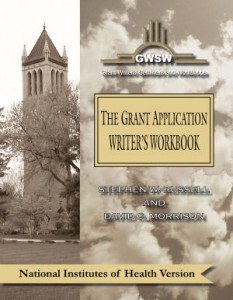As we have discussed previously in a number of blog posts, the NIH (and the CIHR-Canadian Institute for Health Research) have recently implemented strict new policies for the consideration of sex and/or gender in all studies involving vertebrate animals and human subjects. The genesis for such considerations (at least at the level of the NIH) lies in the failure of many investigators to be able to accurately reproduce published findings from research supported by the funding agency, thereby prompting the argument for a need for greater scientific rigor. To remind our readers, the term “sex” refers to genetically determined differences between males and females. In contrast, the term “gender” refers to sociological distinctions in behavioral characteristics that serve to differentiate between/among individuals in society. From a practical perspective, consideration of gender is usually more relevant from the perspective of studies involving human beings.
The institution of these new policies regarding a consideration of the importance of sex and/or gender in research sponsored by the NIH and the CIHR has prompted a considerable degree of confusion among applicants as to exactly how rigorously such studies should be formulated for inclusion in grant applications. For example, is it absolutely necessary to include a consideration of both sexes in every study proposed, or are there exceptions when such requirements would not be relevant, such as diseases that are either exclusively, or almost exclusively, relevant to one sex? How important is the sex of the particular animal or human from which a cell line has been derived? How does one address issues related to the fact that all previous research that forms the basis for the underlying scientific premise for the proposed new research has been carried out in a single sex, and how does one deal with such issues?
Perhaps adding to the confusion are issues related to how these new requirements should be evaluated at the level of peer review. In other words, what do/should reviewers be specifically looking for in the evaluation of grant applications, and how important would such reviews contribute to the overall evaluation of the merit of proposals? To address this question, earlier this year, Karen Tannenbaum and colleagues provided specific commentary on the issue regarding the complexities of actually translating policy into action in a comprehensive article entitled “Evaluating Sex as a Biological Variable in Preclinical Research: The Devil is in the Details” (published in Biology of Sex Differences; 2016, 7:13; DOI: 10.1186/s13293-016-0066-x ). In this commentary, they report the outcome of a study conducted by the Organization for the Study of Sex Differences (first established in 2006 as a component of the Society for Women’s Health Research) in which members attending the 2016 annual meeting were asked to anonymously assess the extent to which they considered each of 13 potential variables to be important in the review of grant applications. While the issues discussed relate primarily to preclinical research, many of the conclusions would likely be equally applicable to clinical research
Types of questions considered by the respondents varied from questions regarding actual content of grant applications to actual format in which such questions should be considered. Participants in the survey had the options of responding 1) Absolutely Critical, 2) Rather Critical, 3) Important but not Critical or 4) Somewhat Important/Too Detailed. While relatively anecdotal, the answers provided by the survey participants provide potentially important insights into various things that are relevant for applicants to at least think about when preparing detailed grant applications. For example, an overwhelming majority of respondents considered it absolutely critical that the sex of all cell lines, tissues or animals be prominently discussed in the grant application. In contrast, almost half of all respondents did not consider it important to include the sex of cell lines, tissues or animals him in the title of a grant application. Further, survey participants were generally not in agreement as to the relative importance of distinguishing between sex and gender in the actual discussion of the research in the grant application.
We strongly advise that all applicants considering preclinical or clinical research-related grant applications spend a few minutes perusing this article. Finally, almost all of these issues are extensively discussed in our recently updated NIH Version of The Grant Application Writer’s Workbook (April 2016).

